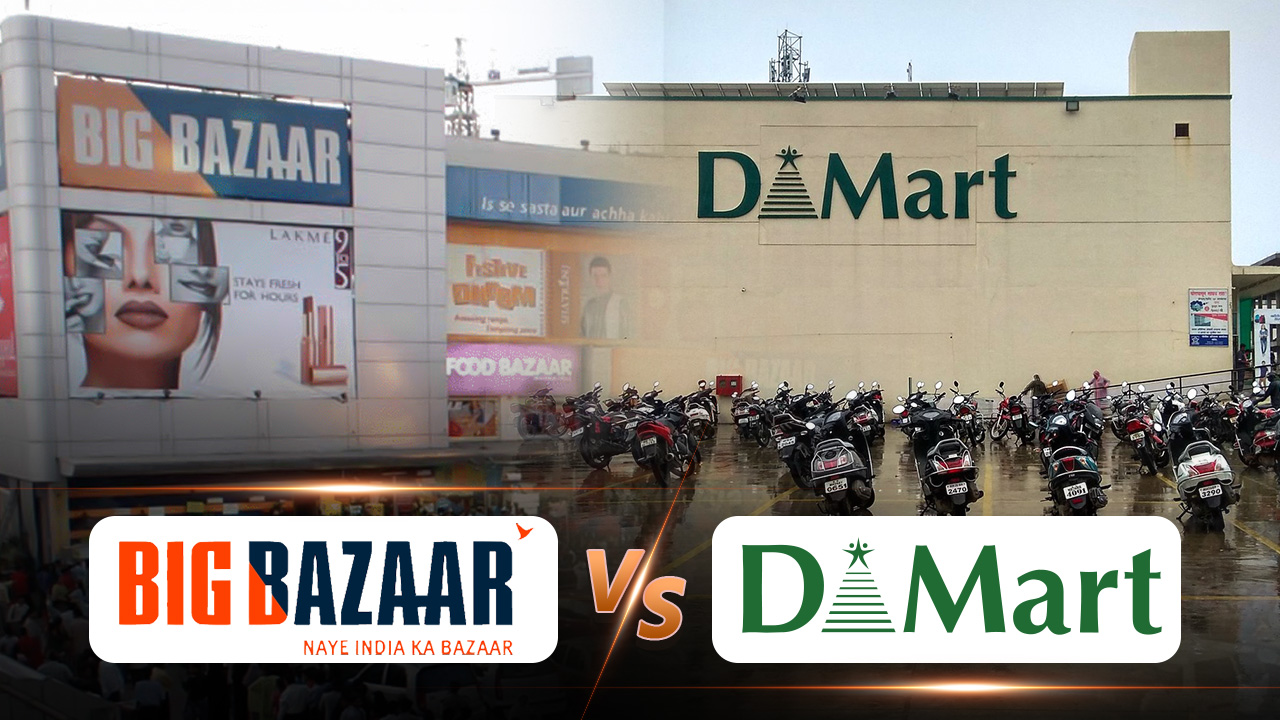Big Bazaar and DMart are two major retail giants in India, but their trajectories have been vastly different. Big Bazaar, once a retail behemoth, saw a rapid decline, while DMart has steadily grown to become a dominant player.
In today's article, you will know what is the reason behind the downfall of Big Bazaar and the success of DMart, and on what factors the dynamics of the retail market in India depend.
The Rise of Big Bazaar
Founded by Kishore Biyani in 2001, Big Bazaar revolutionised Indian retail by introducing a hypermarket format that catered to the middle class. With its tagline "Isse Sasta Aur Accha Kahin Nahin," Big Bazaar focused on providing a wide range of products at affordable prices. The chain expanded rapidly, becoming synonymous with modern retail in India.
The Fall of Big Bazaar
Despite its early success, Big Bazaar faced several challenges that led to its decline:
- Overexpansion: Aggressive expansion without consolidating existing stores led to operational inefficiencies.
- Debt Burden: High levels of debt from borrowing to fund expansion strained finances.
- Poor Inventory Management: Inefficient supply chain and inventory management resulted in stockouts and overstocking.
- Competition: Inability to adapt to changing market dynamics and competition from both offline and online retailers.
- Ownership Issues: Reliance on promoter-led initiatives without robust corporate governance.
The Rise of DMart
DMart, founded by Radhakishan Damani in 2002, followed a conservative and focused approach, leading to its steady rise in the retail market:
- Cost Efficiency: Emphasis on cost control and lean operations.
- Focus on Essentials: Concentration on essential items with high turnover rates.
- Limited Expansion: Controlled and strategic expansion to ensure profitability.
- Customer Loyalty: Strong focus on customer satisfaction and building loyalty.
- Efficient Supply Chain: Robust supply chain management minimising wastage and reducing costs.
Comparison: Big Bazaar vs. DMart
| Aspect | Big Bazaar | DMart |
| Foundation Year | 2001 | 2002 |
| Founder | Kishore Biyani | Radhakishan Damani |
| Expansion Strategy | Aggressive, rapid expansion | Controlled, strategic expansion |
| Debt Levels | High, due to borrowing for growth | Low, self-funded growth |
| Inventory Management | Inefficient, leading to losses | Efficient, minimising wastage |
| Market Focus | The broad, diverse product range | Essentials, high turnover items |
| Customer Focus | Discount-based promotions | Everyday low prices |
| Supply Chain | Poorly managed | Highly efficient |
| Current Status | Declined, sold to Reliance Retail | Growing, expanding profitability |
In short, Big Bazaar's downfall was a result of rapid expansion, high debt, and operational inefficiencies. In contrast, DMart's success can be attributed to its conservative growth strategy, focus on cost efficiency and robust supply chain management. This case study highlights the importance of strategic planning, efficient operations, and market adaptability in the retail sector.


















